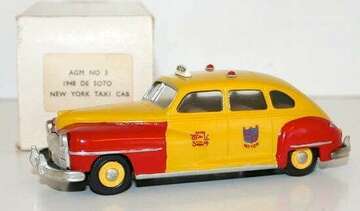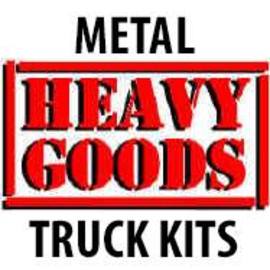Geoff Moorhouse
Designer
Model making was always an ambition for Geoff Moorhouse, and he started making military vehicles from scratch in his teens. However, he soon found that the drawback was that once finished, however pleasing the result, he only had one model to show for all his efforts. So even at that time Geoff started looking at ways of casting components.
When it came to employment, in the early 1970s Geoff achieved his ambition to work for Meccano in Liverpool as a Product Designer. Sadly Meccano were behind the times and struggling, based on a number of issues including an outdated Victorian factory. Corgi had been producing ever more working features, and Dinky Toys were forever trying to catch up. Geoff recalls that at one stage they produced a model with a large number of plastic parts to reduce costs, and despatched these to their suppliers as usual. Not surprisingly to us now, many stocks were returned, as customers still wanted the feel of quality that solid metal models would provide. It was of course the use of metal in the models that was reducing their viability.
Subject ID: 81071
MoreModel making was always an ambition for Geoff Moorhouse, and he started making military vehicles from scratch in his teens. However, he soon found that the drawback was that once finished, however pleasing the result, he only had one model to show for all his efforts. So even at that time Geoff started looking at ways of casting components.
When it came to employment, in the early 1970s Geoff achieved his ambition to work for Meccano in Liverpool as a Product Designer. Sadly Meccano were behind the times and struggling, based on a number of issues including an outdated Victorian factory. Corgi had been producing ever more working features, and Dinky Toys were forever trying to catch up. Geoff recalls that at one stage they produced a model with a large number of plastic parts to reduce costs, and despatched these to their suppliers as usual. Not surprisingly to us now, many stocks were returned, as customers still wanted the feel of quality that solid metal models would provide. It was of course the use of metal in the models that was reducing their viability.
Geoff‘s role as Product Designer was mostly in developing mechanisms and designing prototypes. Some of the models Geoff was involved in included the Foden Tipper, Bren Gun Carrier, German Half-track, and Triumph TR7.
Geoff was made redundant from Meccano in the mid 1970s, and began working for himself making resin mouldings for continental model makers. This included the 1949 De Soto sedan, including the popular New York taxi version. This model he also marketed as his own range, AGM, and later produced for the Sun Motor Company in Metal.
After a few months Geoff was offered a job by Mettoy, and went to work for them at their drawing office in the Northampton. By 1979, Mettoy too were struggling and found it necessary to make redundancies. Geoff took this opportunity to leave and make a go of working for himself based on contacts made with Dutch collectors. Another ex-Mettoy employee Peter Comben made many of the patterns for him, and Tyler Casting undertook the casting. Geoff’s role was to do the initial research and design, followed in due course by the building if required, and the packing and despatch. The “Heavy Goods” range was born! The first model had been the Seddon Atkinson 400 produced in resin fully built, but this was not that viable and metal kits proved a better option for the market at that time.
Both Peter Comben and Tyler castings moved on and Geoff eventually ended up doing the patternmaking and casting himself. This included working for other makers; one was Rod Ward and his Sun motor co. range including the Ford Mustang, Humber and transkits
An early and significant link was with Dirk Miedema, in the Netherlands, the proprietor of Miho Truck Kits. Geoff visited Dirk and persuaded him to transfer from resin mouldings to white metal, and from then Geoff was responsible for all Miho production. Sadly, Dirk has since passed away, but his wife continues with the business. Geoff enjoyed the creative element to his association with Dirk and sees some of the Miho kits as his best work. It also provided a significant part of his business.
His own kit range is still popular and well known; even the very early kits are still in demand. Although much of the white metal business has been overtaken by the Chinese die-casting industry, his ability to work for others, and to remain small and flexible, has enabled him to survive.
In addition to the casting he has now become a retailer, in order to supplement his earnings, and buys in stock to sell via the Internet. Geoff has noticed that he is getting more people of mature years coming to him for kits, building for nostalgic reasons, but recognises that this may be a temporary reprieve, and that inevitably young people will not be seeking white metal as a kit building medium.
Subject ID: 81071
Subject ID: 81071

